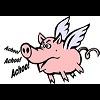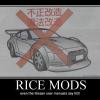Fluttering sound from around turbo?
Announcements
-
Similar Content
-
Latest Posts
-
By GabsReDeal · Posted
Before starting any work, we attempted to adjust the tune. However even after adjusting it to certain extremes like completely stopping fuel, it had no effect. What fixed it was removing the Nistune Board and installing the original EPROM instead. This immediately fixed the issue. Everything should have been fine with the Nistune Board installation, so I am unsure why it has caused a problem. The soldered connector is also properly soldered. This worked when I first got the 550cc injectors, before cleaning, but that may have been a coincidence. We ended up not installing the fuel pump hanger (at least for now). So currently running stock injectors, stock fuel pump, stock fuel pump hanger – Well everything stock except the exhaust. Now I have around €1400 in Nistune, Injectors, and Hanger collecting dust for the time being, perhaps I'll install them in the future. For now I'll enjoy the car as is 😁 Thanks a lot for all your assistance, I really appreciate all the help you have given me. -
The turbo can’t be the issue. They’re proven to make much much power than you’re making. There is something in the setup that isn’t correct. - has the exhaust got any silly step downs? - what exhaust manifold?
-
Ok, just the way you wrote it made it look like you had the stagger the wrong way around
-
By hoodedreeper · Posted
I was getting anxious with the DVLA not knowing if the paperwork is fine or not, so I rang them. No update had been given, but I was reassured that providing the box was ticked on the V750 then the application will go through fine. I've been checking the DVLA website pretty much every day, in the hope that it would have been done. Fast forward to Monday 29th and I was greeted with a new screen on the check, and it finally showed as Taxed and MOT'd, woohoo! The car was in desperate need of a clean, not knowing when this day was coming it was put off. As far as I was concerned I had another 3 weeks I'm not normally one for using snow foam, but I wanted to give it another try It hasn't cleaned up too bad considering it's 21 years old and lived on a boat for a number of weeks. The personalised number plate is J2 XBK, an illegally spaced number plate would have it read J2X BK. BK could either represent the colour black or Baker, which is my surname. I filmed the first drive, the Youtube link will be at the end. I used the same driving route I did with the 323F V6 when I had a new exhaust installed, heres a couple of photos A few more since then Youtube video can be viewed here: https://www.youtube.com/watch?v=TjkFHPzjGDw -
By TurboTapin · Posted
Kelford 246-A2. 262in/272ex.
-



1.thumb.png.36afd656b26d55f5d425fc76e21561f2.png)




Recommended Posts
Create an account or sign in to comment
You need to be a member in order to leave a comment
Create an account
Sign up for a new account in our community. It's easy!
Register a new accountSign in
Already have an account? Sign in here.
Sign In Now